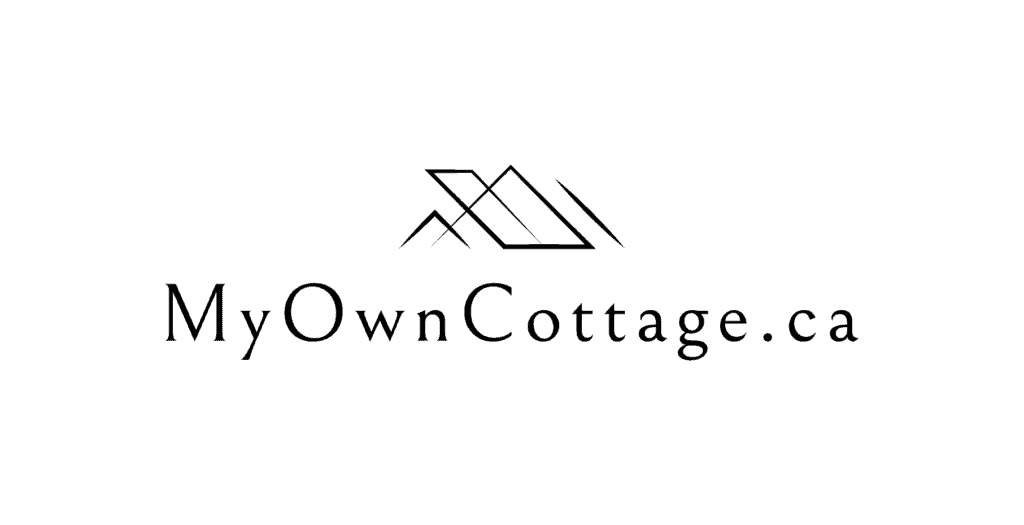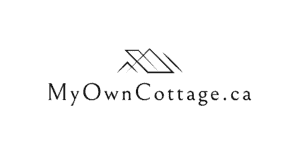Is Winter Living in a Prefab Cottage Too Isolated?
Is winter living in a prefab cottage too isolated?
Discover how Ontario prefab living balances peace with practicality—plus safety tips, services, and community insights.
Is Winter Living in a Prefab Cottage Too Isolated?
No, winter living in a prefab cottage in Ontario is not too isolated—modern prefab homes are built to year-round standards (e.g., CSA A277).
Moreover, they typically include high-speed internet, municipal or contracted plowing, and access to emergency services.
Many rural communities also offer winter social hubs and co-ops, ensuring connectivity both digitally and socially.
Winter living in Ontario’s prefab cottages often sparks questions about remoteness and livability.
But modern prefab homes—especially those built by experienced Ontario cottage builders like My Own Cottage—offer year-round connectivity, safety, and community, even in rural areas.
This article explores what it’s actually like to spend a winter in a prefab cottage and how to ensure peace of mind without sacrificing comfort or connection.
Will Winter in a Prefab Cottage Feel Too Remote?
If you’re picturing long, snowy months in total solitude—think again.
While prefab cottages are typically nestled in scenic, low-density regions like Muskoka, Bancroft, or Haliburton, today’s year-round prefab designs prioritize functionality.
Importantly, this includes heightened connectivity, and warmth during Ontario’s harshest seasons.
These aren’t rustic hunting shacks—they’re high-quality homes often featuring modern insulation, high-performance windows, and square footage optimized for winter living.
Will I Feel Cut Off During Winter in a Rural Prefab Home?
Prefab cottages can range in living space from compact 500 sq/ft tiny homes to larger custom homes designed to suit families or remote workers.
Modular building techniques allow for customization in both layout and finishes.
All so that your dream home can include a cozy fireplace, extra insulation, and even a home office with fiber internet access.
💬 “We thought we’d be cut off,” says Jason M., a year-round prefab homeowner in Haliburton. “Instead, we have a smart thermostat, 100mbps internet, and we see more wildlife than traffic—and that’s the best part.”
🔍 Explore more in our pillar guide: Can You Live Year-Round in a Prefab Cottage in Ontario?
How Year-Round Cottages Stay Connected—Literally and Socially
The stereotype of the lonely, snowbound cabin is outdated.
Rural prefab cottages in Ontario are now designed with connectivity and community in mind.
High-speed LTE or Starlink satellite internet allows for seamless Zoom calls and streaming—ideal for remote work.
Many prefab builders pre-wire for connectivity or partner with local ISPs.
Road maintenance services—municipal or contracted—keep driveways and access roads plowed.
Local communities maintain vibrant winter calendars with social events, snowshoe clubs, and coffee meetups—even in areas like Bancroft or the Kawarthas.
Moreover, thanks to improved building codes, many prefab cottages include indoor mudrooms, efficient floor plans, and passive solar design to optimize both thermal comfort and natural light.
💡 Case Insight: A couple from Peterborough transformed their prefab into a part-time vacation home, then went full-time once fiber internet became available in their area.
Safety, Services, and Emergency Access in Winter Conditions
Safety is a top concern—and for good reason. Remote living without preparation can be risky.
But today’s year-round prefab homes are built to exceed Ontario’s safety standards.
Winter Safety Features:
Fire department and EMS mapping protocols ensure emergency access when proper signage and maintained roadways are in place.
Plow contracts or private plowing services are commonly bundled into community developments.
Propane delivery, wood supply, and heating oil refills are routinely available in cottage regions.
Prefab builders like My Own Cottage integrate controlled environment construction techniques to ensure durability under extreme weather conditions.
Effectively, this minimizes risks like frozen pipes or carbon monoxide buildup.
✅ Pro Tip: Before purchasing, ask about emergency access routes, road maintenance agreements, and propane refill scheduling.
Living Full-Time in a Cottage Near Bancroft
Michelle D., a marketing consultant from Toronto, traded city life for a custom cabin outside Bancroft in 2022. She shares:
“I didn’t want to give up connectivity for quiet. Luckily, I didn’t have to. Our prefab home has a standing seam metal roof, high-efficiency propane furnace, and even high-performance windows. We’ve never felt more comfortable—especially in winter.”
Their model—a 960 square foot modular home—features an open living room, dining room, and south-facing windows that invite natural light all winter.
Thanks to energy-efficient design and a thoughtful building plan, their heating costs are lower than their former downtown condo’s.
➡️ Want to see how prefab pipes hold up? Read our expert guide: Will Pipes Freeze in a Prefab Cottage During Ontario? Winters?
Tips to Stay Comfortable, Safe, and Connected All Winter
To turn your prefab into the perfect home for winter:
✅ Your Winter Living Checklist:
✔️ Install smart thermostats and monitor temps remotely
✔️ Use spray foam insulation in key zones (attic, crawl space)
✔️ Confirm plowing agreements for shared/private roads
✔️ Set up off-grid backup systems (e.g., generators or wood stoves)
✔️ Keep emergency kits stocked and visible
✔️ Choose a home model with vestibules or covered entry doors
✔️ Prioritize customer service support during move-in and first winter
“The entire process was made simple with My Own Cottage’s seasonal readiness checklist,” says Evan L., a prefab owner in Muskoka. “The exceptional service made all the difference.”
Isolation or Opportunity?
Prefab cottages in Ontario offer what many traditional homes can’t: a unique structure, built to match your personal style, in the right place.
With the cost savings, peace of mind, and excellent support now available through reputable cottage builders like Myowncottage.ca, winter doesn’t mean isolation—it means independence.
Whether it’s a guest house, modular home, or your new home entirely, winter in a prefab cottage could be your perfect solution.
❄️ Ready to Embrace the Winter Prefab Lifestyle?
Ready to get started?
Book your winter-living consultation to start planning your custom design with faster construction and fewer construction delays.
🧑💼 Request a Free Consultation
📲 Call Us Directly: (705) 345-9337
✅ Ontario-Built | ⚡ Energy-Efficient | 🏡 Fully Customizable | 🚚 Fast Delivery
Alternatively, for your convenience, you can also simply fill out the contact form below and we’ll get back to you soon! 👇
❓ FAQ: Is Winter Living in a Prefab Cottage Too Isolated?
Is winter living in a prefab cottage too isolated?
No, prefab cottages in Ontario can be comfortable and connected year-round if built to code and located near plowed roads, high-speed internet, and emergency services.
Are prefab homes good in winter?
Yes, high-quality prefab homes built to CSA A277 standards offer superior winter performance with energy-efficient insulation, sealed building envelopes, and cold-weather-rated systems.
Can tiny homes survive Canadian winters?
Yes, tiny homes can handle Canadian winters if properly winterized with spray foam insulation, skirting, a heat source like a mini-split or wood stove, and backup power options.
What happens to a house without heat in winter?
An unheated house in winter risks frozen or burst pipes, structural damage, mold growth, and severe energy inefficiency due to condensation and frost cycles.
How do you winterize a prefab cottage?
To winterize a prefab cottage, insulate all pipes, seal windows and doors, use programmable thermostats, install skirting, and ensure emergency heat and power backups are in place.
How do you close up a cottage for winter?
Shut off and drain the water system, unplug appliances, clean the fridge, seal all entry points, and place rodent deterrents and moisture absorbers to prevent winter damage.
How do you open a cottage after winter?
Inspect the roof, plumbing, and HVAC, restore water and electricity, test smoke detectors, and check for rodent or water damage before fully reopening your cottage.
Is winter living in a prefab cottage too isolated in Canada?
Not if the cottage is near a serviced road, has fiber or LTE internet, and you maintain regular social engagement—many full-time residents in Ontario live this way comfortably.
Are there prefab homes made for cold climates?
Yes, cold-climate prefab homes use passive house principles, thick insulation, HRV systems, and energy-efficient layouts to reduce heat loss and withstand -30°C or colder conditions.
What’s the best prefab cottage for winter living in Ontario?
The best prefab cottages for Ontario winters are built by experienced local builders like My Own Cottage, offering four-season designs with customizable layouts and energy-saving features.
Can prefab homes handle snow and ice?
Yes, prefab homes built to Ontario building codes include reinforced roofing systems, proper snow load ratings, and cold-weather engineering to manage snow accumulation and ice safely.
Do prefab cottages have emergency access in winter?
Yes, many rural prefab communities contract snow plow services and meet municipal access standards, ensuring reliable routes for EMS and fire services year-round.

